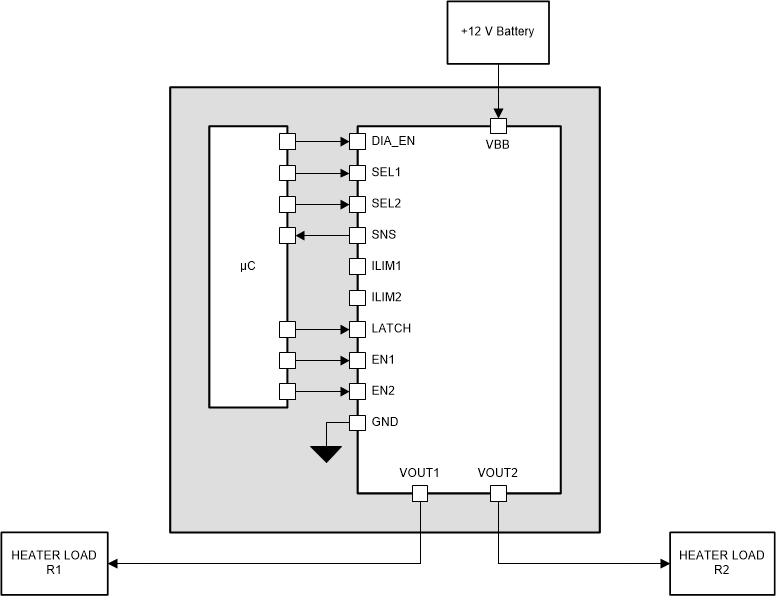ZHCSJN5A February 2018 – April 2019 TPS2HB50-Q1
ADVANCE INFORMATION for pre-production products; subject to change without notice.
- 1 特性
- 2 应用
- 3 说明
- 4 修订历史记录
- 5 Device Comparison Table
- 6 Pin Configuration and Functions
- 7 Specifications
- 8 Parameter Measurement Information
-
9 Detailed Description
- 9.1 Overview
- 9.2 Functional Block Diagram
- 9.3
Feature Description
- 9.3.1 Protection Mechanisms
- 9.3.2 Diagnostic Mechanisms
- 9.4 Device Functional Modes
- 10Application and Implementation
- 11Power Supply Recommendations
- 12Layout
- 13器件和文档支持
- 14机械、封装和可订购信息
10.2 Typical Application
This application example demonstrates how the TPS2HB50-Q1 device can be used to power resistive heater loads in automotive seats. In this example, we consider dual heater loads that are powered independently by the two channels of the device. A dual-channel device is the ideal solution as it will yield a smaller solution size relative to two single-channel devices.
 Figure 16. Block Diagram for Powering Dual Heater Loads
Figure 16. Block Diagram for Powering Dual Heater Loads